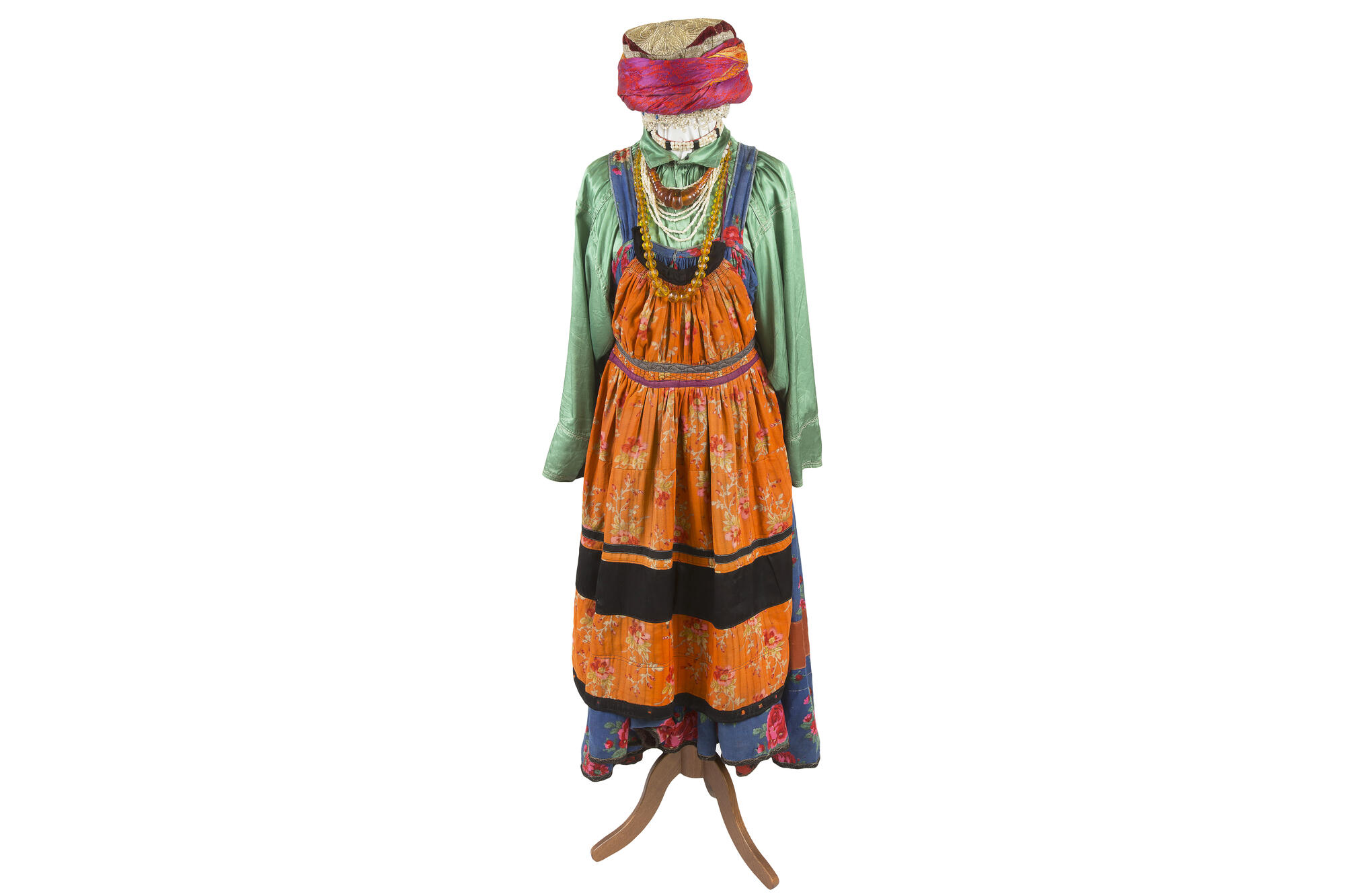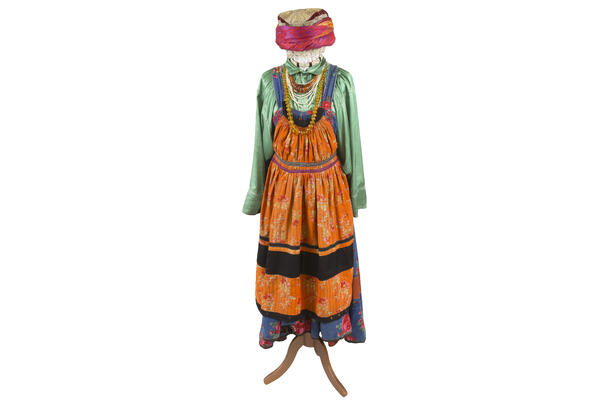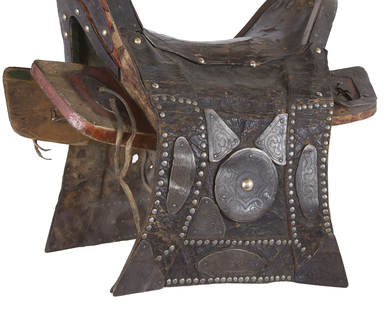The costume from the museum collection belonged to a Semeiskie woman. The Semeiskie were a community of Old Believers who rejected the reforms of Patriarch Nikon of Moscow and new church traditions. In the second half of the 17th century, they were forced by authorities to flee to the outskirts of the country or abroad.
In 1764, the government tried to return the Old Believers back to Russia. Empress Catherine the Great first ordered them to come back on their own but later sent the military after them. As a result, around 35 thousand residents of the Old Believers’ settlement of Vetka (presently — the territory of Belarus) were moved to Siberia and Transbaikal. Entire families of Old Believers from the Polish-Lithuanian Commonwealth (presently — the territory of Poland, Ukraine, Belarus and Lithuania) were forced to move. That is why their original name “the Poles” was eventually replaced by “the Semeiskie” from Russian “semya’ — “family”.
In the Transbaikal area, the Semeiskie had two types of women’s costume — the khiloksky and chikoysky ones, which differed in colors, materials, components and decorations.
The khiloksky costume was common to the Old Believers’ villages in Buryatia in the valley of the Khilok River in the territory of Bichursky, Mukhorshibirsky, Tarbagataysky Districts of the modern Republic of Buryatia and to the locality of Khasurta in the Khorinsky District of the Transbaikal Krai. In these regions, the costume of a woman of the Semeiskie included a round sarafan (a long jumper dress), a shirt with asymmetrical sleeves, a petticoat, a headdress and sometimes a zapon — a drawstring apron.
A belt was a mandatory attribute of the costume. It was sewn of bright and dark fabric and worn over the sarafan but under the zapon, if there was one. Strips of satin ribbons or fabric, but less often wide knitted lace, were sewn to the hemline.
The zapon was an obligatory element of the chikoysky costume. A woman always wore an apron over a skirt and a shirt even if she did not wear a sarafan. The Semeiskie costumes were bright and colorful: all items of clothing for one set were sewn from fabrics of different colors.
Such costumes in the Semeiskie villages have practically disappeared in 1970s. In the Bichursky and Mukhorshibirsky Districts, young girls and women wore traditional costumes only for holidays but over time, that tradition has also perished.
In 1764, the government tried to return the Old Believers back to Russia. Empress Catherine the Great first ordered them to come back on their own but later sent the military after them. As a result, around 35 thousand residents of the Old Believers’ settlement of Vetka (presently — the territory of Belarus) were moved to Siberia and Transbaikal. Entire families of Old Believers from the Polish-Lithuanian Commonwealth (presently — the territory of Poland, Ukraine, Belarus and Lithuania) were forced to move. That is why their original name “the Poles” was eventually replaced by “the Semeiskie” from Russian “semya’ — “family”.
In the Transbaikal area, the Semeiskie had two types of women’s costume — the khiloksky and chikoysky ones, which differed in colors, materials, components and decorations.
The khiloksky costume was common to the Old Believers’ villages in Buryatia in the valley of the Khilok River in the territory of Bichursky, Mukhorshibirsky, Tarbagataysky Districts of the modern Republic of Buryatia and to the locality of Khasurta in the Khorinsky District of the Transbaikal Krai. In these regions, the costume of a woman of the Semeiskie included a round sarafan (a long jumper dress), a shirt with asymmetrical sleeves, a petticoat, a headdress and sometimes a zapon — a drawstring apron.
A belt was a mandatory attribute of the costume. It was sewn of bright and dark fabric and worn over the sarafan but under the zapon, if there was one. Strips of satin ribbons or fabric, but less often wide knitted lace, were sewn to the hemline.
The zapon was an obligatory element of the chikoysky costume. A woman always wore an apron over a skirt and a shirt even if she did not wear a sarafan. The Semeiskie costumes were bright and colorful: all items of clothing for one set were sewn from fabrics of different colors.
Such costumes in the Semeiskie villages have practically disappeared in 1970s. In the Bichursky and Mukhorshibirsky Districts, young girls and women wore traditional costumes only for holidays but over time, that tradition has also perished.



